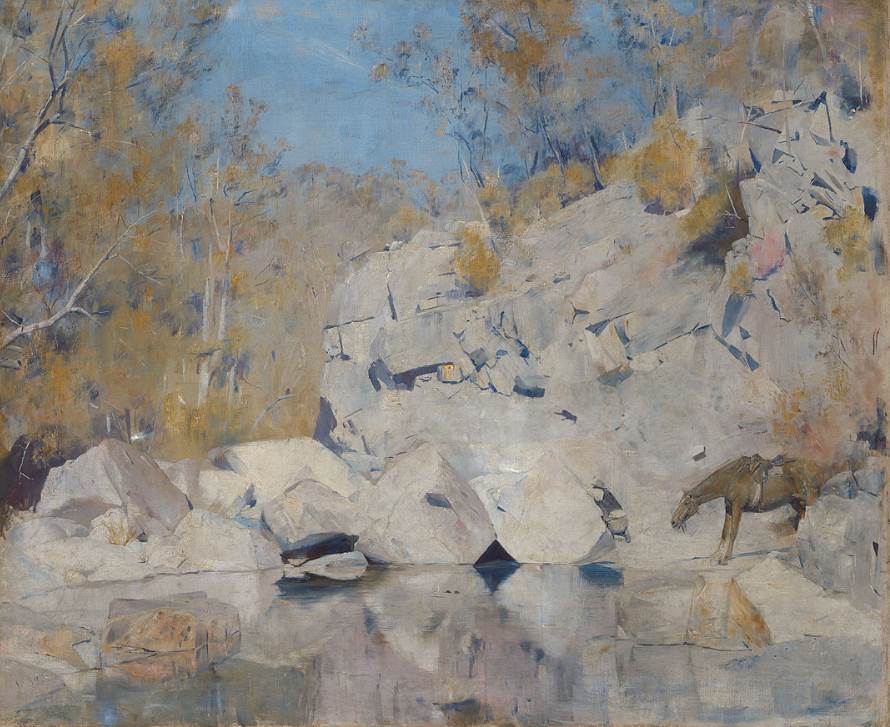As the name of the National Gallery of Australia suggests, it’s the national museum of the country. It was established by the Australian Government in 1967.
Located in Canberra, the capital city of the country in the Australian Capital Territory, the original idea to build a national museum came about in the early 20th century.
A committee was established in 1910 and they prioritized building a museum in Canberra in 1912. Nothing happened for several decades because of both World Wars and the Great Depression.
The museum opened in the late 1960s with an extensive collection of Australian art produced by the most famous Australian artists, but gradually acquired paintings of modern western art.
Several paintings that were purchased for large sums of money in the 1970s were controversial acquisitions, but these became popular attractions at the NGA.
Today, the museum houses over 166,000 works of art, including paintings, sculptures, and Australian Aboriginal artifacts.
In this article, you’ll discover some of the most famous paintings on display at the National Gallery of Australia.
1. Blue Poles – Jackson Pollock
- Date created: 1952
- Dimensions: 212.1 × 488.9 centimeters (83.5 × 192.5 inches)
Blue Poles is one of the many paintings by Jackson Pollock that he produced using his drip-painting technique. Pollock (1912-1956) developed this technique after being introduced to liquid paint in New York City in the late 1930s and became the leading Abstract Expressionist artist shortly after.
The painting was the most expensive painting that was acquired by the National Gallery of Australia in the early 1970s. The museum bought it for A$1.3 million, an amount that required the approval of Prime Minister Gough Whitlam at the time.
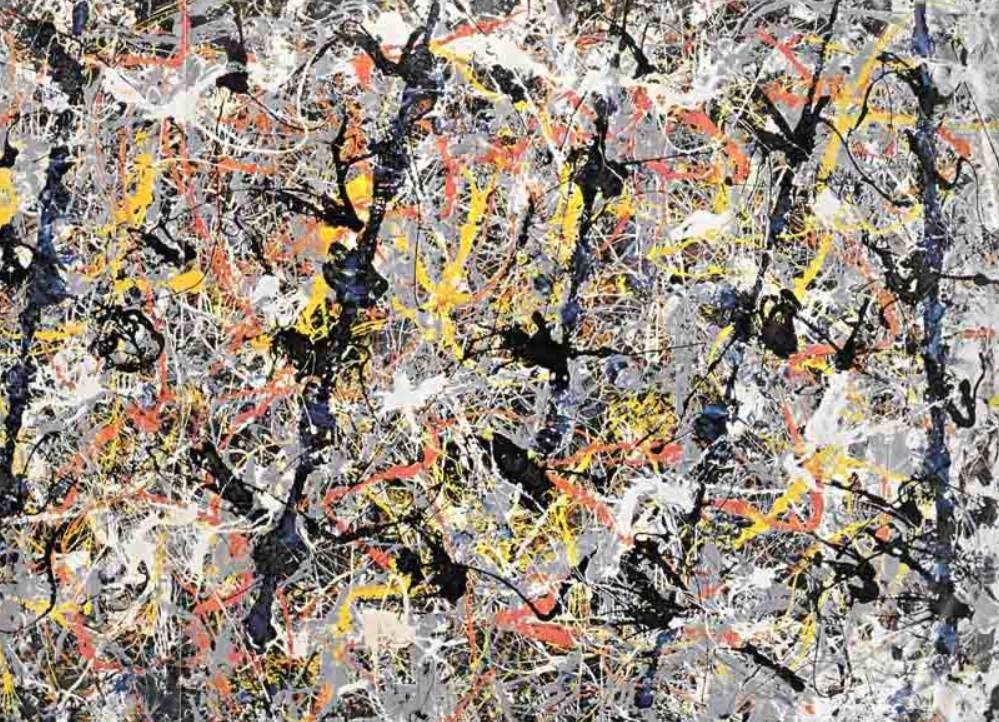
2. Bourke Street – Tom Roberts
- Date created: 1886
- Dimensions: 51.2 × 76.7 centimeters (20.2 × 30.2 inches)
Bourke Street is one of the best-known paintings of Tom Roberts (1856-1931), an Australian artist who was a leading figure of the Heidelberg School. This was a group of artists who were inspired by the Impressionist artists in Europe in the late 19th century.
Roberts produced this painting shortly after returning to Australia from Europe in the year 1885. He had spent 4 years in Europe before this. The painting depicts a contemporary view of Bourke Street in Melbourne, one of the main thoroughfares in the city.
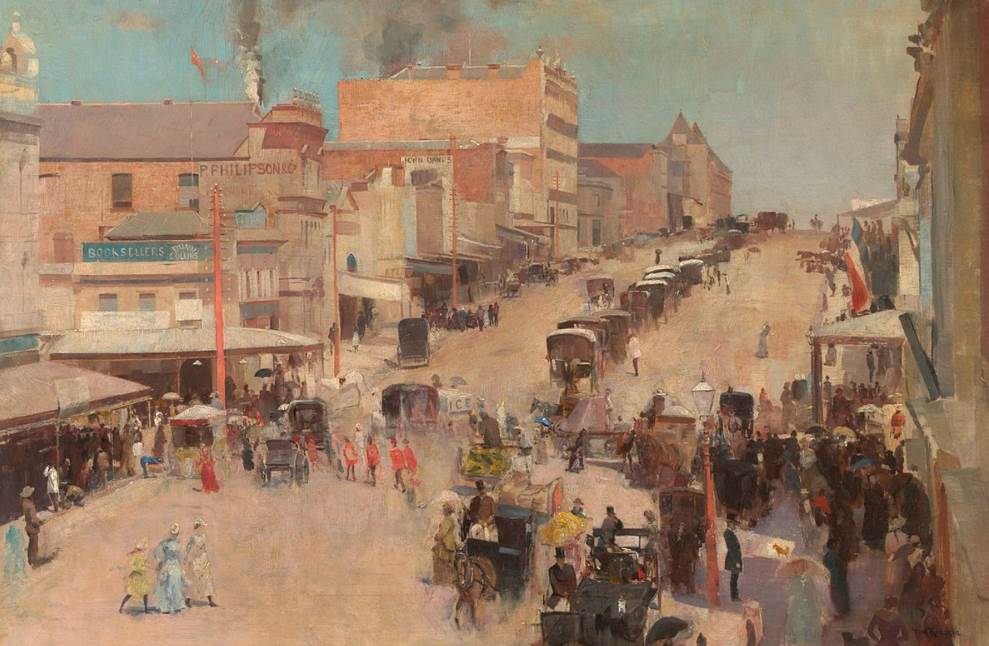
3. Woman V – Willem de Kooning
- Date created: 1952-1953
- Dimensions: 114.5 x 154.5 centimeters (45.07 x 60.82 inches)
Woman V is an Abstract Expressionist painting by Willem de Kooning (1904-1997), a Dutch artist who moved to the United States in his early 20s and who became an American citizen in the year 1962. He became part of the New York School of Abstract Expressionists following World War II.
This is another painting that was acquired by the National Gallery of Australia in the early 1970s and it’s pretty easy to understand why it was a controversial acquisition. The peculiar painting was purchased for the sum of A$650,000. Despite its weird content, it’s a popular attraction at the NGA.
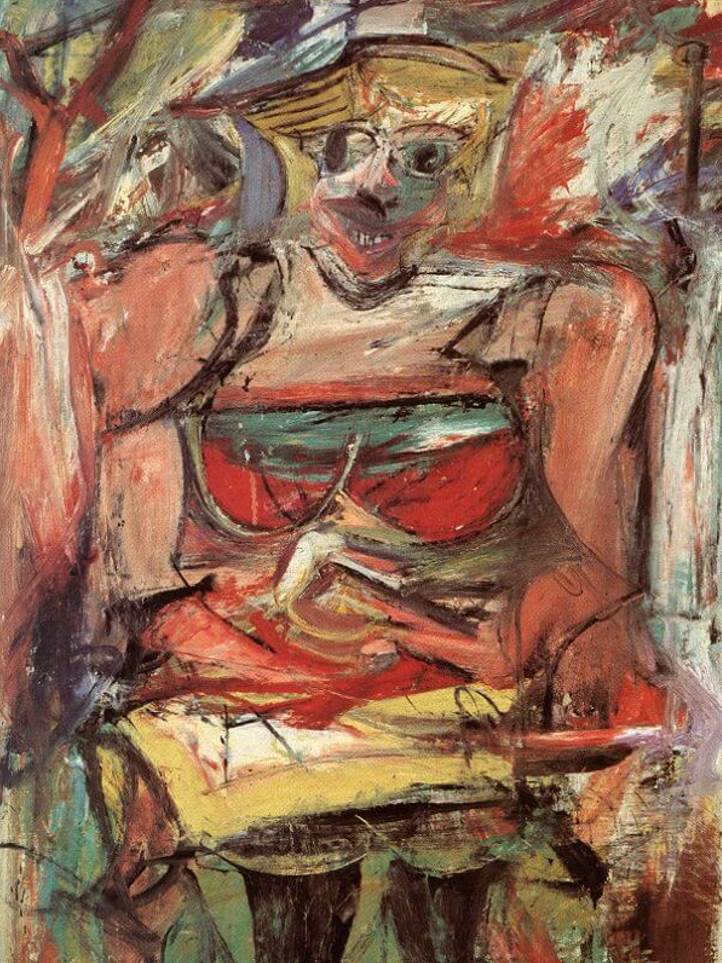
4. Afterglow – Frederick McCubbin
- Date created: 1912
- Dimensions: 91.5 x 117 centimeters(36 x 46 inches)
Afterglow is one of the most fascinating paintings by Frederick McCubbin (1855-1917), another leading figure of the Heidelberg art movement also known as “Australian Impressionism.” We can clearly see the influence of Impressionist artists such as the paintings by Claude Monet (1840-1926).
The painting was completed in the final years of the artist’s life and about 5 years after his only trip to Europe in 1907. Apart from Impressionist paintings, he was also able to study the paintings of J.M.W. Turner. These became another major influence in the works of his final period.
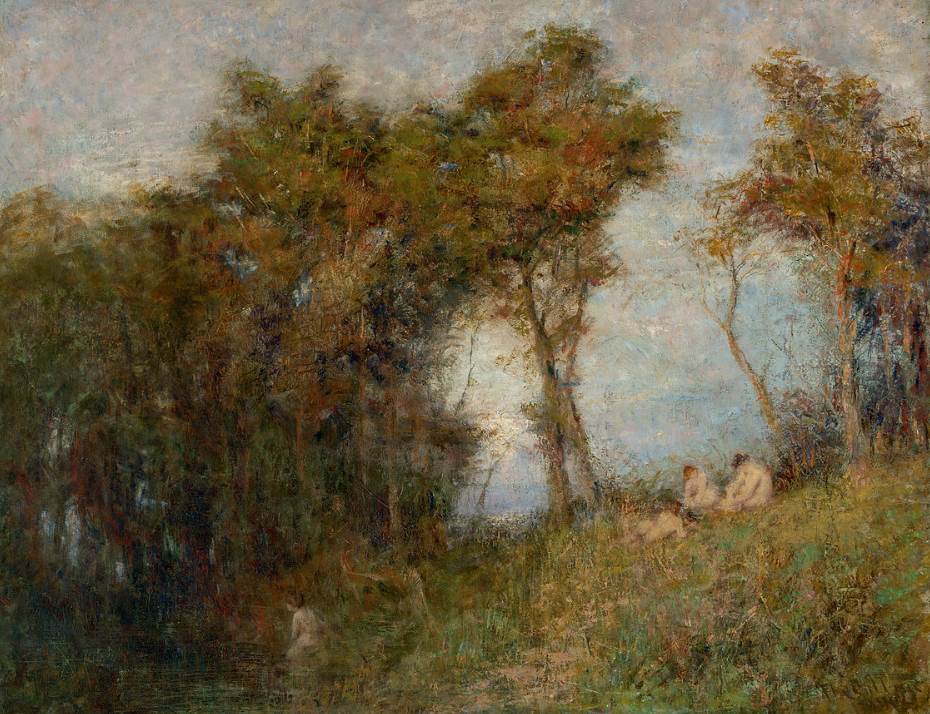
5. The Trial – Sidney Nolan
- Date created: 1947
- Dimensions: 90.7 × 121.2 centimeters (30 × 34 inches)
The Trial is one of the many fascinating paintings by Sidney Nolan (1917-1992), one of the most versatile modern Australian artists of the 20th century. It’s one of s series of paintings that depict the escapades of Ned Kelly (1854-1880, an Australian outlaw and bushranger.
This particular painting depicts Kelly’s trial following his final shootout with the police during which he wore a suit of bulletproof armor. Kelly is depicted wearing handcuffs while the judge and a large number of people stare at him in the courtroom.
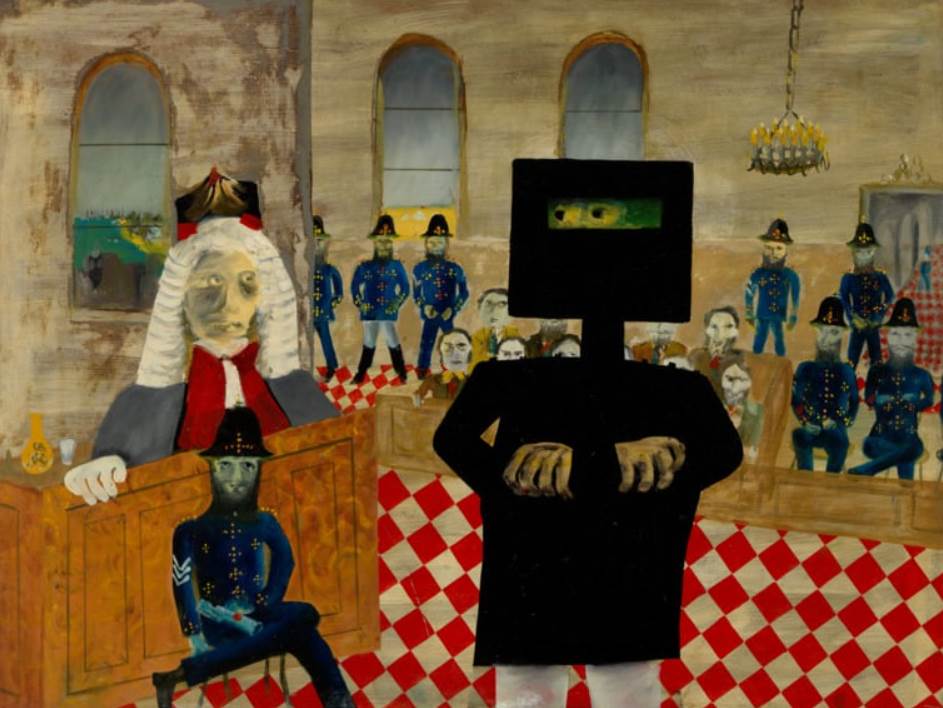
6. Afternoon in Naples – Paul Cézanne
- Date created: 1875
- Dimensions: 37 × 45 centimeters (15 × 18 inches)
Afternoon in Naples or “L’Après-midi à Naples” is a painting by Paul Cézanne (1839-1906), one of the most influential artists of the late 19th and early 20th centuries. The French artist’s distinctive style which shaped the course of modern art can clearly be recognized in this relatively small work of art.
The painting depicts a naked couple lying in bed in the afternoon while a servant is seen arriving with a teapot. Cézanne is believed to have been inspired by the paintings of Eugène Delacroix. The setting is a reference to the assumed idyllic way of life in Italy, especially the Italian city of Naples.
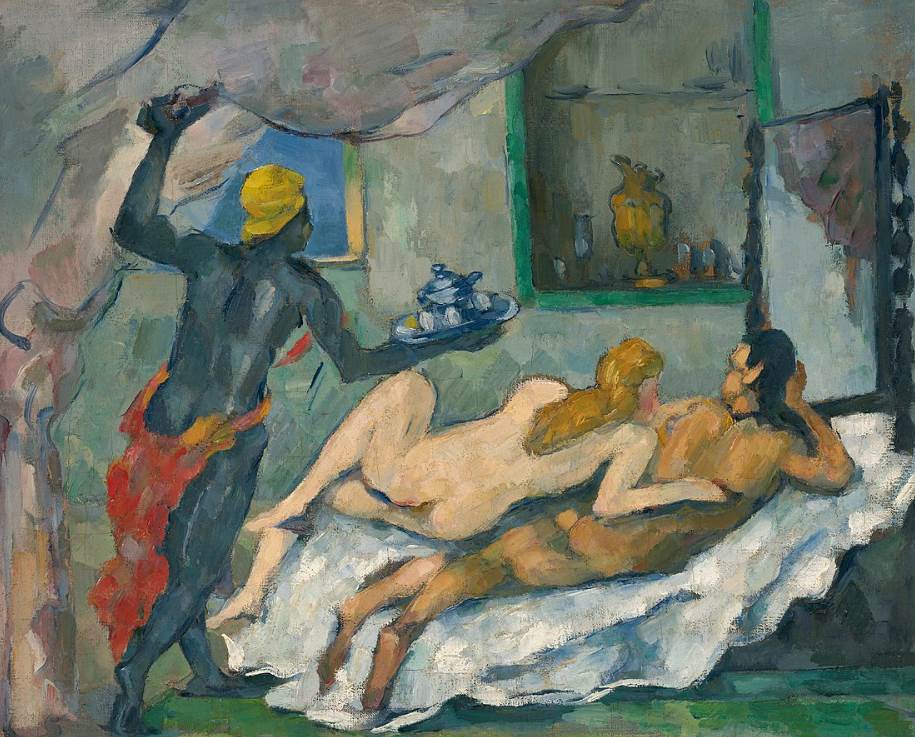
7. Water Lilies – Claude Monet
- Date created: 1914-1917
- Dimensions: 181 x 201.6 centimeters (71.25 x 79.37 inches)
Water Lilies or “Nymphéas” is one of the many paintings of this subject by Claude Monet, the founding father of the Impressionist art movement. It depicts the water lilies that were growing in the water pond of his house in Giverny, a town in northern France where he spent the final decades of his life.
He developed the garden himself and painted hundreds of works over a period of over 30 years. There are about 250 paintings depicting water lilies in this artist’s oeuvre and a relatively large one can be admired at the National Gallery of Australia.
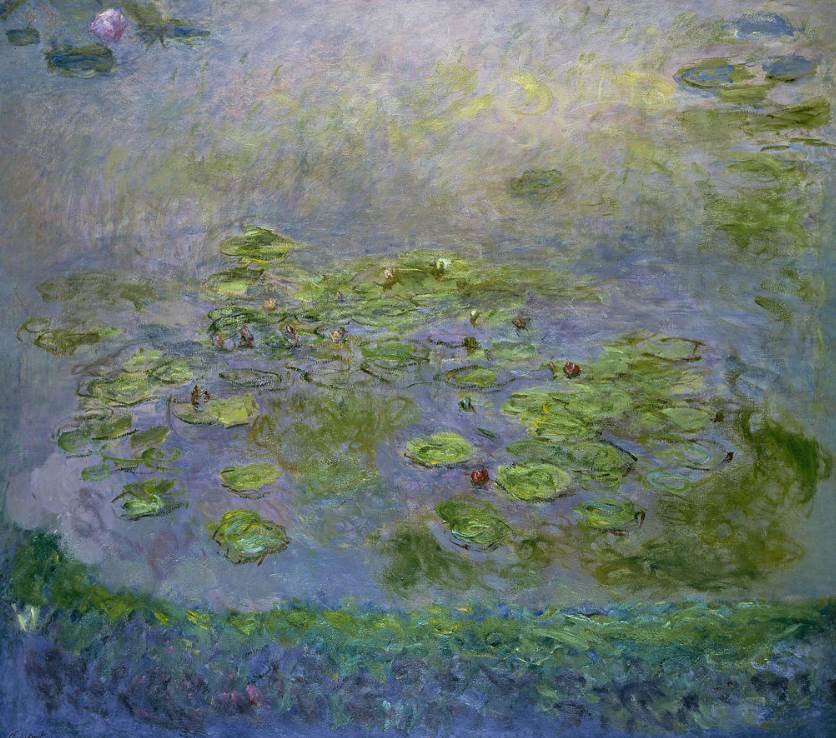
8. Latin American Grand Final – John Brack
- Date created: 1969
- Dimensions: 167.5 × 205 centimeters (65.9 × 81 inches)
Latin American Grand Final is a painting by John Brack (1920-1999), an Australian artist who was one of the leading figures of the Antipodeans group. This group of modern artists was established in response to the Abstract Expressionist movement and emphasized the need for figurative art.
The painting was completed in 1969 and was part of a series of paintings depicting the subject of ballroom dancing. This series was exhibited in the year 1970 and received a lukewarm response, mainly because Brack used clashing colors. The painting has been part of the collection of the National Gallery of Australia since 1981.

9. Golden Summer, Eaglemont – Arthur Streeton
- Date created: 1889
- Dimensions: 81.3 × 152.6 centimeters (32.01 × 60.08 inches)
Golden Summer, Eaglemont is a painting by Arthur Streeton (1867-1943), another Australian artist who was part of the Heidelberg art movement. Heidelberg is a suburb of Melbourne and Streeton depicted the countryside multiple times, including in this remarkable work of art.
The painting was produced according to the ideals of Impressionism, which means “en Plein air” (outdoors). In the distance, you can see the Dandenong Ranges appearing above the golden field on a hot summer day. The painting was acquired by the NGA in 1995 for $3.5 million, a record price for an Australian painting at the time.

10. In a corner on the Macintyre – Tom Roberts
- Date created: 1895
- Dimensions: 71.1 × 86.4 centimeters (28 × 34 inches)
In a corner on the Macintyre is a painting by Tom Roberts that is believed to depict bushranger Frederick Wordsworth Ward (1835-1870) during a shootout with the police. Ward gave himself the nickname “Captain Thunderbolt” and his reputation earned him the nickname “gentleman bushranger.”
He is famous for his escape from Cockatoo Island in Sydney Harbor and for being the longest roaming bushranger in Australian history. The painting by Tom Roberts was acquired by the NGA in 1971 and has a special place in the museum’s collection.
